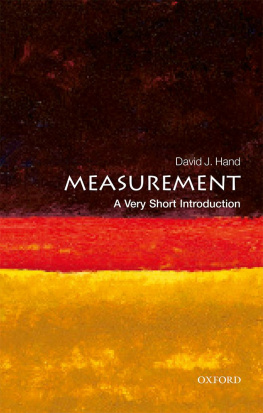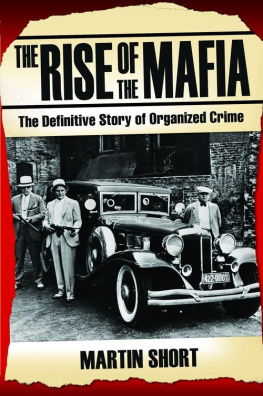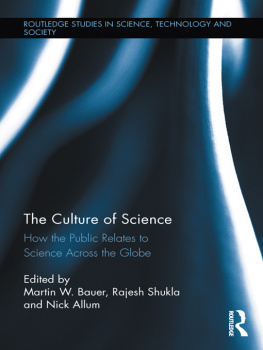
The Science of Crime Measurement
Crime statistics are ubiquitous in modern society but how accurate are they? This book investigates the science of crime measurement by focusing on four main questions: how do we count crime? How do we calculate crime rates? Are there other measurements of crime? What are the issues surrounding crime statistics? All too often we take the measurement of crime at face value when there is, in fact, a science behind it.
This book specifically deals with issues related to spatially referenced crime data that are used to analyse crime patterns across the urban environment. The first section of the book considers alternative crime rate calculations, whilst the second section contains a thorough discussion of a measure of crime specialisation. Finally, the third section addresses a number of aggregation issues that accompany such data: crime type aggregations, temporal aggregations of crime data, the stability of crime patterns over time, and the importance of spatial scale.
This book builds on a growing body of literature about the science of crime measurement and offers a comprehensive account of this growing subfield of criminology. The book speaks to wider debates in the fields of crime analysis, environmental criminology and crime prevention and will be perfect reading for advanced level undergraduate and graduate students looking to find out more about the measurement of crime.
Martin A. Andresen is an Associate Professor in the School of Criminology and Institute for Canadian Urban Research Studies at Simon Fraser University. His research interests include crime measurement, spatial crime analysis, environmental criminology, and the geography of crime. This research has been published in leading journals on both criminology and geography including Applied Geography, British Journal of Criminology, Environment and Planning A, Journal of Research in Crime and Delinquency, and Urban Studies.
The Science of Crime Measurement
Issues for spatially referenced crime data
Martin A. Andresen
First published 2013
by Routledge
2 Park Square, Milton Park, Abingdon, Oxon, OX14 4RN
Simultaneously published in the USA and Canada
by Routledge
711 Third Avenue, New York, NY 10017
Routledge is an imprint of the Taylor & Francis Group, an informa business
2013 Martin A. Andresen
The right of Martin A. Andresen to be identified as author of this work has been asserted by him in accordance with sections 77 and 78 of the Copyright, Designs and Patents Act 1988.
All rights reserved. No part of this book may be reprinted or reproduced or utilised in any form or by any electronic, mechanical, or other means, now known or hereafter invented, including photocopying and recording, or in any information storage or retrieval system, without permission in writing from the publishers.
Trademark notice: Product or corporate names may be trademarks or registered trademarks, and are used only for identification and explanation without intent to infringe.
British Library Cataloguing in Publication Data
A catalogue record for this book is available from the British Library
Library of Congress Cataloging-in-Publication Data
A catalog record has been requested for this book
ISBN: 978-0-415-85609-6 (hbk)
ISBN: 978-0-203-72825-3 (ebk)
Typeset in Times New Roman
by Cenveo Publisher Services
For my dad
Contents
PART I
Crime analysis and the ambient population
PART II
Measurement and analysis of crime specialization
PART III
Crime stability and crime aggregation
Residential population of Vancouver
Ambient population of Vancouver
Residential-based violent crime rate
Ambient-based violent crime rate
Ambientresidential population ratio
Resident-based violent crime rate, natural logarithm, census tracts
Ambient-based violent crime rate, natural logarithm, census tracts
Resident-based violent crime rate, natural logarithm, dissemination areas
Ambient-based violent crime rate, natural logarithm, dissemination areas
Resident-based local indicators of spatial association (LISA) map, natural logarithm, census tracts
Ambient-based local indicators of spatial association (LISA) map, natural logarithm, census tracts
Resident-based local indicators of spatial association (LISA) map, natural logarithm, dissemination areas
Ambient-based local indicators of spatial association (LISA) map, natural logarithm, dissemination areas
Municipalities of the Greater Vancouver Regional District
Crime rate (a) and location quotients (b), assault, Vancouver, 2001
Crime rate (a) and location quotients (b), robbery, Vancouver, 2001
Crime rate (a) and location quotients (b), sexual assault, Vancouver, 2001
Crime rate (a) and location quotients (b), theft, Vancouver, 2001
Crime rate (a) and location quotients (b), theft from vehicle, Vancouver, 2001
Crime rate (a) and location quotients (b), theft of vehicle, Vancouver, 2001
Crime rate (a) and location quotients (b), burglary, Vancouver, 2001
Automobile theft, location quotients
Break and enter, location quotients
Violent crime, location quotients
Total CrimeAssault, Vancouver, dissemination areas, 2001
Total CrimeBurglary, Vancouver, dissemination areas, 2001
Total CrimeTheft, Vancouver, dissemination areas, 2001
Theft from VehicleBurglary, Vancouver, dissemination areas, 2001
Spatial point pattern output, yearly averagespring, Vancouver, 2001
Spatial point pattern output, yearly averagesummer, Vancouver, 2001
Spatial point pattern output, yearly averagefall, Vancouver, 2001
Spatial point pattern output, yearly averagewinter, Vancouver, 2001
Spatial units of analysis
City-wide increases (a) and decreases (b), robbery, street segments
Sexual assault, census tract to dissemination area
Example sample sizes by administrative unit, 2 percent margin of error and 95 percent confidence
Percentage of self-reported victimizations reported to the police
Violent victimization incidents and estimated violence participations taking co-offenders into account, by types of violence, United States, 2006
Residential and ambient populations, descriptive statistics for enumeration areas
Regression results: predicting the ambient population
Percentage distribution of violent crime rates
Residential- and ambient-based crime rates, descriptive statistics
Regression results: predicting the ambient-based rates from residential-based rates
Spatial regression results, full model, census tracts
Spatial regression results, individual models, census tracts
Spatial regression results, full model, dissemination areas
Spatial regression results, individual models, dissemination areas
Descriptive statistics for dependent variables, 1996
Correlations for dependent variables, 1996
Spatial regression results, automotive theft, 1996
Spatial regression results, break and enter, 1996
Spatial regression results, violent crime, 1996








